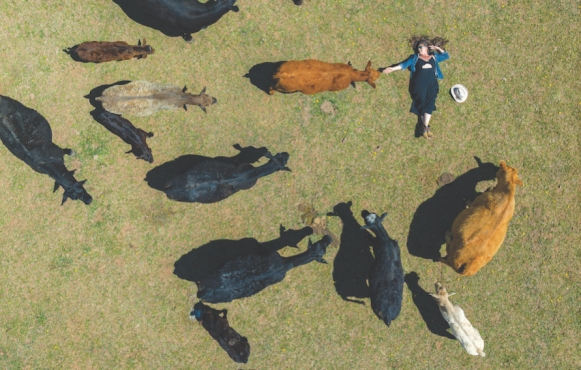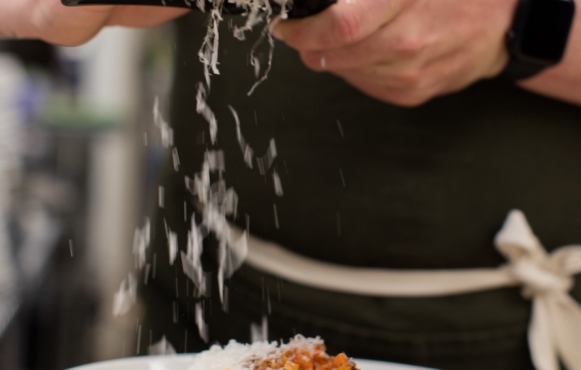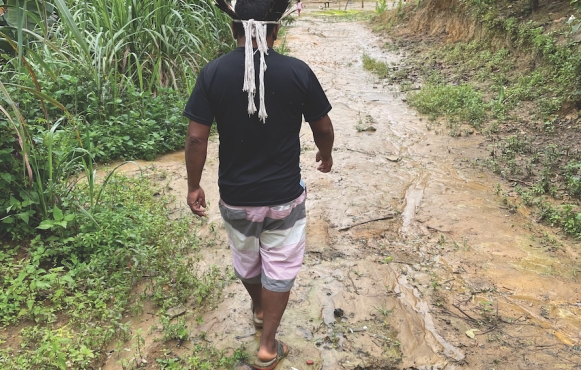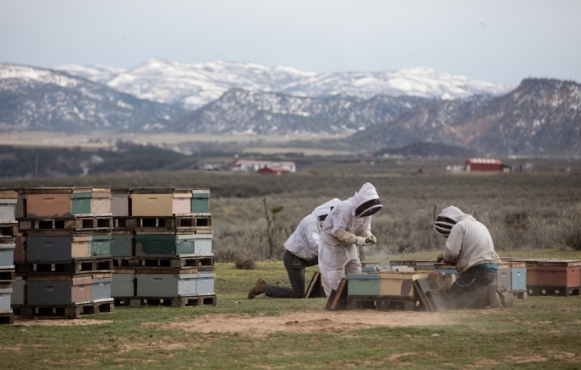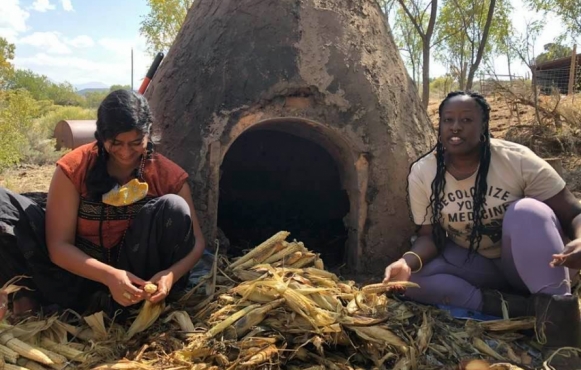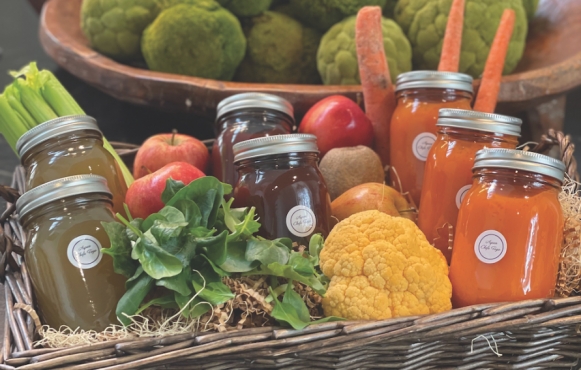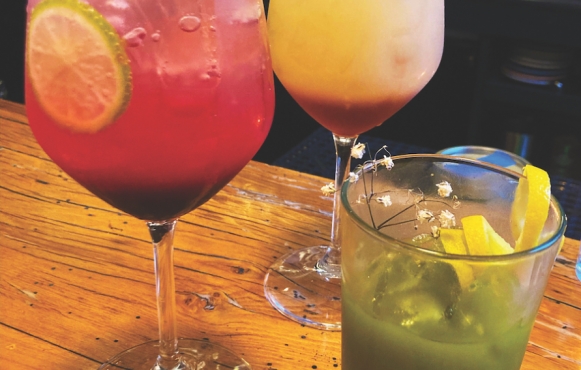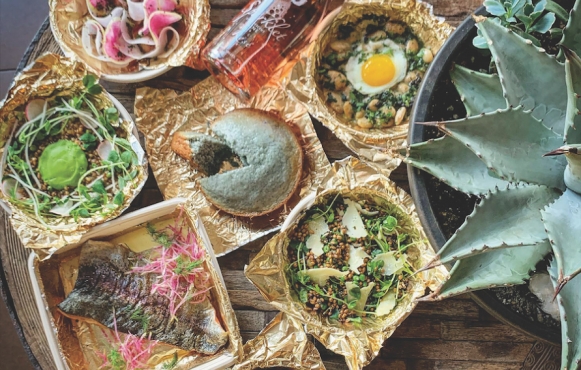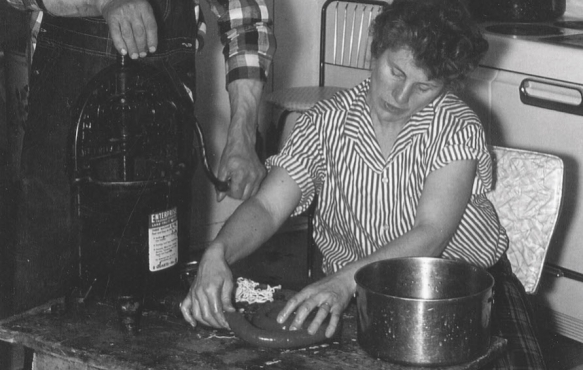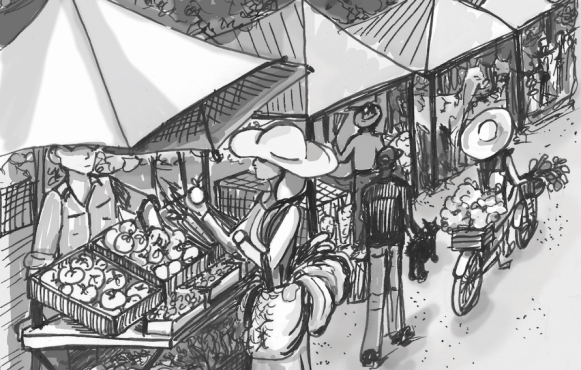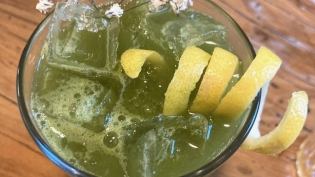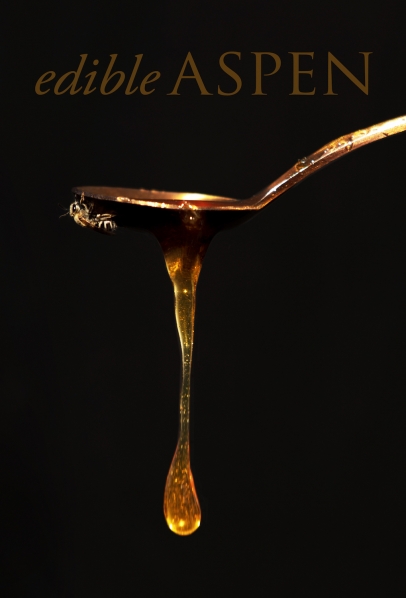
Editor's Note
Local food, global connections
My husband Mike and I were married in Brazil in November 2008, a few days after Barack Obama was elected the first Black president of the United States. For our small wedding party, it was an uplifting moment of solidarity with a culture entirely different from our own. Here we were in a tiny fishing village in Bahia—Brazil’s most African state—that saw few American tourists, and everywhere we were recognized as such, people would pump their fists, shout something that included “Obama!” and flash huge celebratory grins.
Partly through this connection we made friends with a few locals, who wound up helping organize some of our wedding events and attending as guests. Without speaking a lick of each other’s language, we bonded further over food. Our wedding reception ended up being as local as it could get, featuring the food of the region—rich stews cooked in coconut milk and dendê (palm) oil, local seafood, chile sauces, cassava in everything, and exotic fruits made into ice cream—along with a local capoeira troupe and local band.
Never have I traveled anywhere that hasn’t made some kind of impression on me, but Bahia—especially the people and their food (which go hand in hand)—has particularly influenced my feelings of human culture. And in an era when global and local forces seem eager to pull us apart, never underestimate the possibilities when they join, especially when it comes to food.
I was not at all surprised that Farm Collaborative Executive Director Eden Vardy was inspired to launch the annual farm-to-table Community Meal (the foundation of the organization itself) after learning about a hunger-relief program that supports farmers in Brazil. In this issue, read about Brazil’s restaurantes populares and other pioneering food and farmer-support policies that Vardy hopes we in the United States can learn from (“Behind Brazil’s Contrasts, a Food Policy Pioneer,” page 48.)
In “Cooking Globally, Thinking Locally” (page 54), globe-trotting chefs share how they spread the love of local foods—without being constrained by any one particular culture.
Here in the Roaring Fork Valley, cattle ranchers weather national and global challenges to continue doing what they love, which includes stewarding the land that’s vital to supporting their ever-evolving livelihoods (“‘More Than Just a Job,’” page 34).
In “Plight of the Bees” (page 28),” learn about the global forces of climate change that are threatening bees locally and around the world—species that are key to food systems everywhere. And in “First Foods” on page 26, delve into maíz de concho and other foods through which a San Luis Valley organization is revitalizing indigenous foodways and culture.
Finally, in Edible Traditions (page 61), the Aspen Historical Society tells an immigrant story similar to those told all over the country: how food traditions and recipes from alpine areas of Europe became Aspen cuisine.
Through all these stories, I hope you’ll agree that there’s an intrinsic value in locally produced food that goes way beyond basic nourishment—and that it’s the people who grow the food, nurture the land and animals, perpetuate the foodways, and promote food equity who can make a difference—sometimes globally.
Catherine Lutz, editor



